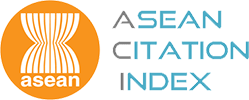Changing Trend of Capital Flows: The Case of India
Keywords:
Globalization, emerging economies, economic integration, capital flowsAbstract
Many countries witnessed enormous increases in international capital mobility after globalization. This, in turn, has improved economic integration among emerging economies and developed nations. The trend of these cross country flows of capital discloses that non-debt creating private capital flows are dominating the official flows which come in the form of official grants and private debt flows. Moreover, the portfolio equity investment which shows tremendous growth has exposed individual countries to the risk of improved volatility and sudden stops. These trends, driven by globalization, have enabled the pursuit of higher returns and portfolio diversification as well as market-oriented reforms in many countries which have liberalized access to financial markets. As a new participant in the globalization wave, India went through several structural and policy changes only in the early 1990s. India introduced a New Economic Policy guided by the IMF and the World Bank with the intention of economic stabilization. This paper reviews several literature on fundamental aspects and some former empirical evidence about globalization and capital flows to emerging economies with special reference to India. It also highlights the adverse impact of hot money along with debt flow in India. Keywords: Globalization, emerging economies, economic integration, capital flows.Additional Files
Published
31-12-2013
How to Cite
Gandhi, S., Bulsara, H. P., & Dhingra, V. S. (2013). Changing Trend of Capital Flows: The Case of India. International Journal of Management Studies, 20(2), 71–104. Retrieved from https://e-journal.uum.edu.my/index.php/ijms/article/view/10398
Issue
Section
Articles












